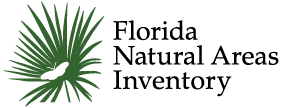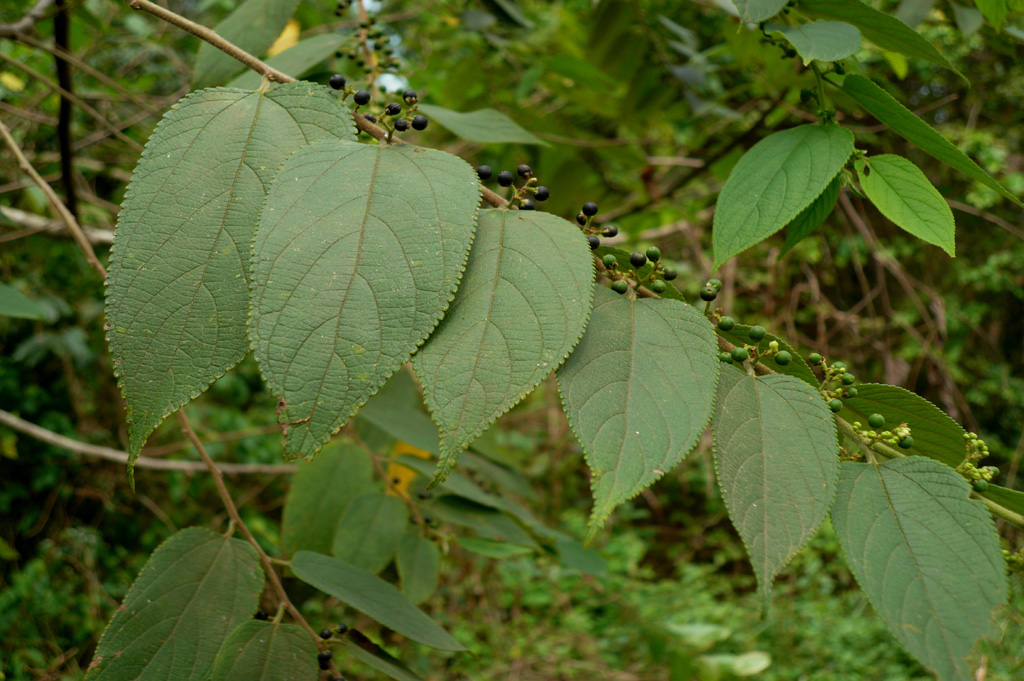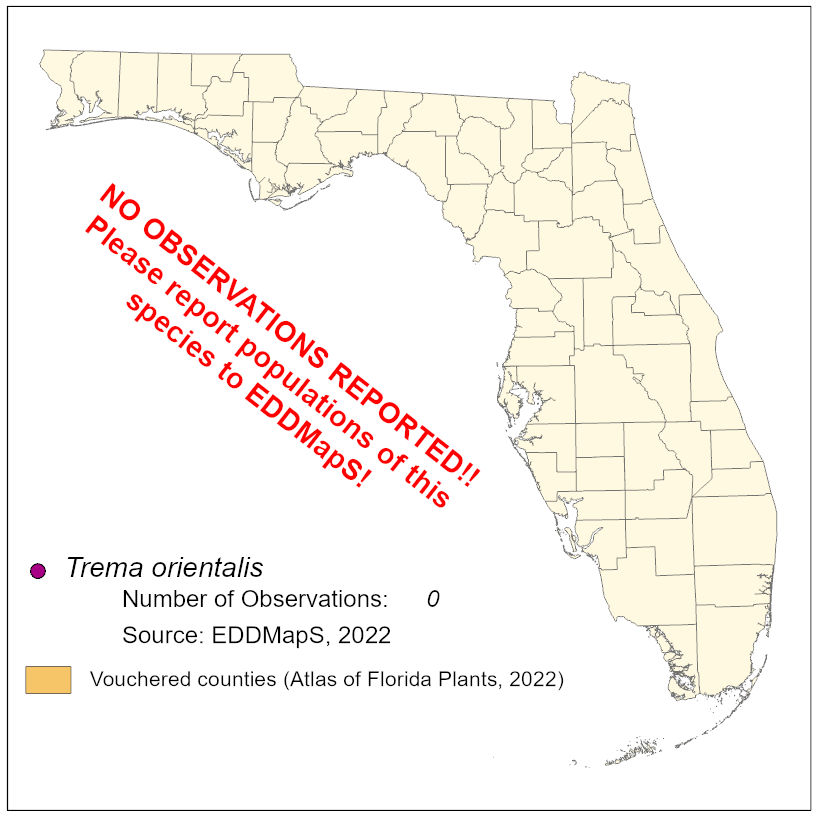Trema orientalis


Common Name: oriental trema
Family: Cannabaceae
Common Synonyms: none
USDA Hardiness Zone: 11
Growth Habit: Tree
Origin: Old World tropics
FISC Category: -
FDACS Listed Noxious Weed: No
Introduction Date: Oldest Florida herbarium specimen from 2004
IFAS Assessment:

Evergreen tree to 18 m tall and 0.6 m in trunk diameter. Bark light gray grown, smooth, finely fissured. Twigs long, slender, unbranched, spreading, light green, turning brown. Leaves alternate, in two rows, with slender leafstalks 1?2 cm long, finely hairy. Blades narrowly ovate, 6-10 cm long and 2-3 cm wide, very long-pointed at apex, base slightly notched with sides unequal, edges finely serrate, thin, with three main veins from base. Upper surface light green, slightly shiny and rough, with veins sunken, lower surface dull and paler, soft hairy, with prominent light yellow veins. Inflorescence an axillary cyme, 1-5 cm long and broad. Flowers many, nearly stalkless, light green, 3 mm long, male and female in separate inflorescences. Fruit a round drupe, 5 mm in diameter, fleshy, pink maturing to black. Seed single, round, brown, more than 1.5 mm long.
Disturbed areas
Seeds dispersed by animals. Vouchered in Miami-Dade, Broward, and Palm Beach counties.

NA
Little, E. L. and R. Skolmen. 1989. Common Forest Trees of Hawaii (Native and Introduced). Agriculture Handbook No. 679. Forest Service, U.S. Dept. of Agriculture. Reprinted version published by the College of Tropical Agriculture and Human Resources, University of Hawaii at Manoa, 2003.www.ctahr.hawaii.edu/forestry/trees/.../CFT_Trema_orientalis.pdf. Accessed on June 25, 2014.
Motooka, P. et al. 2003. Trema orientalis in Weeds of Hawaiis Pastures and Natural Areas, An Identification and Management Guide. http://www.ctahr.hawaii.edu/invweed/WeedsHI/W_Trema_orientalis.pdf. Accessed on June 23, 2014.